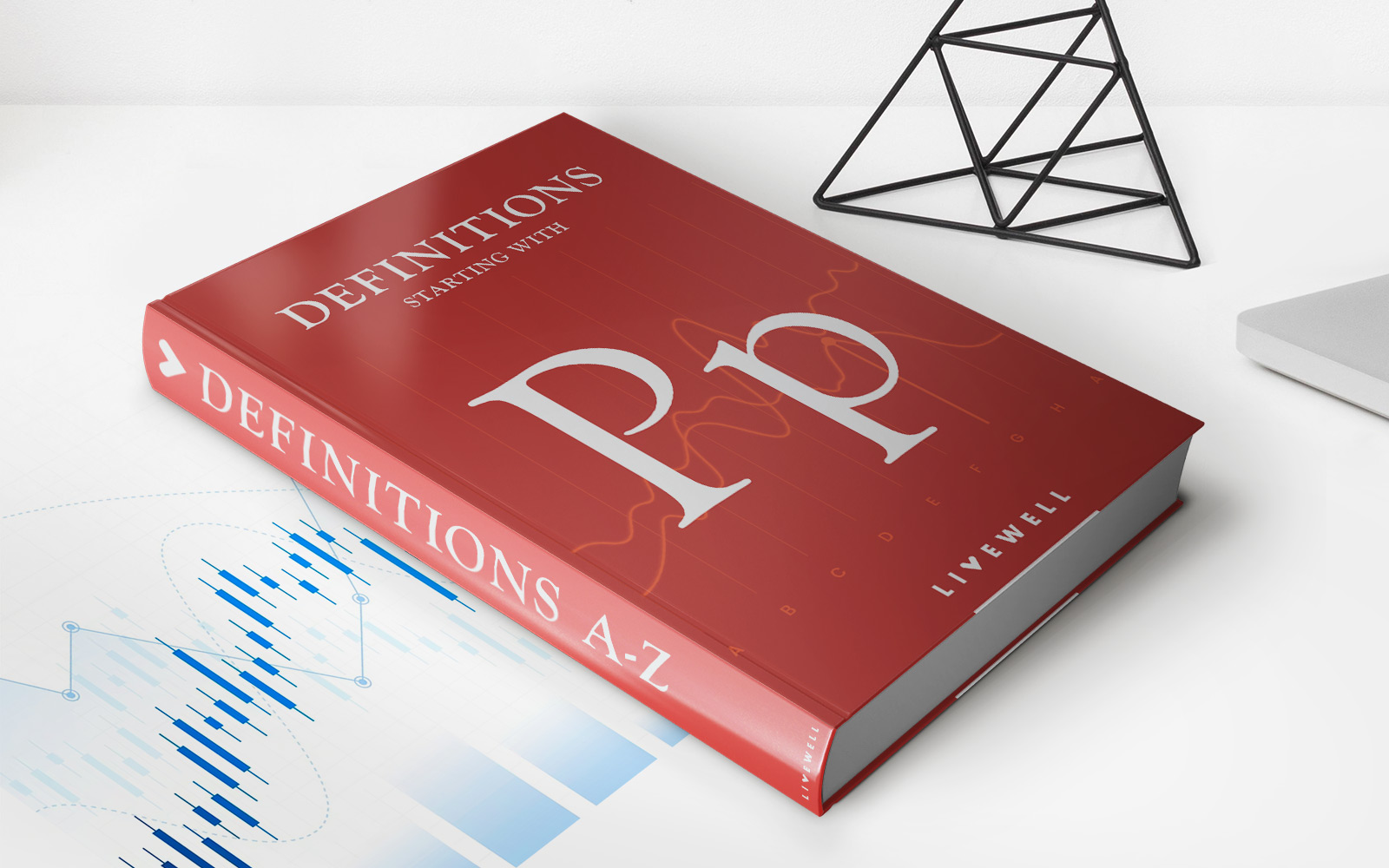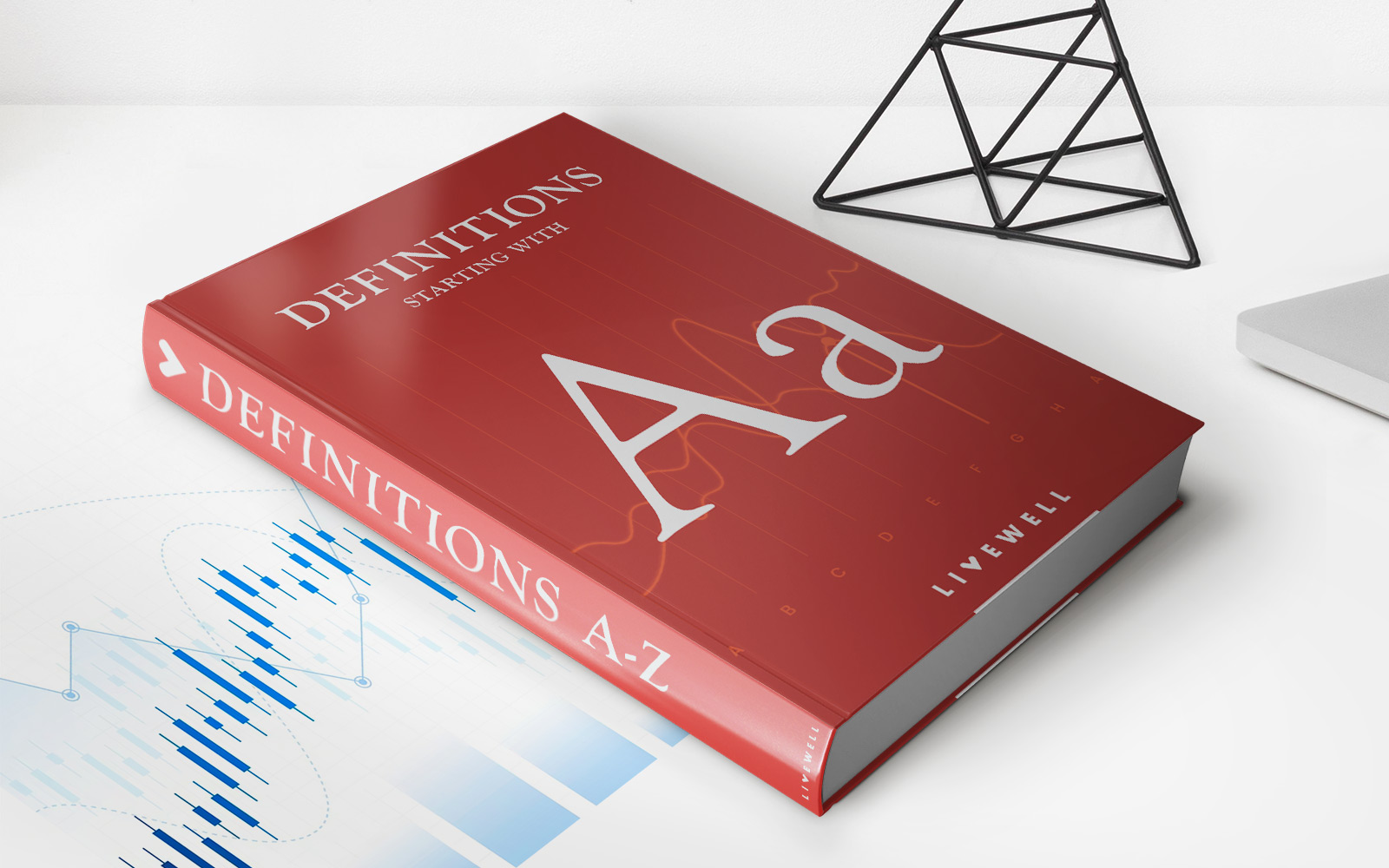

Finance
What Is Tail Coverage Insurance
Published: November 21, 2023
Understanding the importance of tail coverage insurance in finance and its benefits for professionals. Don't risk financial liability, ensure your protection.
(Many of the links in this article redirect to a specific reviewed product. Your purchase of these products through affiliate links helps to generate commission for LiveWell, at no extra cost. Learn more)
Table of Contents
- Introduction
- Understanding Tail Coverage Insurance
- Why Tail Coverage Insurance is Important
- Key Features of Tail Coverage Insurance
- How Tail Coverage Insurance Works
- Types of Tail Coverage Insurance
- Benefits of Tail Coverage Insurance
- How to Obtain Tail Coverage Insurance
- Important Considerations for Tail Coverage Insurance
- Conclusion
Introduction
When it comes to protecting your financial well-being, having the right insurance coverage is essential. In the field of finance, there are many specialized insurance products designed to address specific risks and provide comprehensive coverage. One such insurance policy is tail coverage insurance.
Tail coverage insurance, also known as an extended reporting period endorsement, is an insurance policy that provides coverage for claims made against a professional after their standard liability policy has expired or been canceled. This type of insurance is particularly important for professionals in high-liability fields such as finance, as it offers protection against potential claims that may arise even after they have stopped practicing or changed careers.
The need for tail coverage insurance arises from the nature of claims in the finance industry. Financial professionals, such as financial advisors, accountants, and investment managers, can handle large amounts of money and provide advice that can significantly impact their clients’ financial outcomes. As a result, there is a higher risk of claims being made against them, even long after the completion of their services.
Without tail coverage insurance, professionals could face severe financial and reputational damage if a claim is brought against them after their standard liability policy expires. This is because most liability insurance policies provide coverage only for claims made during the policy period, and any claims made after the policy expiration would not be covered. Tail coverage insurance fills this coverage gap to safeguard professionals against potential claims that may arise after their policy ends.
In the next sections, we will delve deeper into the importance, key features, and types of tail coverage insurance. We will also explore how this insurance works, the benefits it provides, and how to obtain tail coverage insurance. Additionally, we will discuss important considerations that professionals should keep in mind when considering this type of coverage.
By understanding tail coverage insurance, finance professionals can ensure they have the necessary protection to safeguard their finances and reputation even after they have left their respective fields. Let’s explore this critical insurance product in more detail.
Understanding Tail Coverage Insurance
Tail coverage insurance, also known as an extended reporting period endorsement, is a specialized insurance policy that provides coverage for claims made against a professional after their standard liability policy has expired or been canceled. The purpose of this policy is to protect professionals who may face claims even after they have stopped practicing or moved on to a different career.
It is important to note that tail coverage insurance is typically purchased as an endorsement to a professional liability insurance policy. This means that it extends the coverage of the original policy for a specified period, allowing professionals to be protected against potential claims that arise after the policy ends.
The need for tail coverage insurance arises due to the nature of claims in the finance industry. Professionals in this field often handle large sums of money and provide advice that can have significant financial implications for their clients. Consequently, the risk of claims being made against them continues even after they have completed their services or retired from the profession.
Without tail coverage insurance, professionals would be left exposed to potential claims that arise after their standard liability policy expires. This could lead to financial strain, as legal defense costs and potential settlements could have a significant impact on their personal finances. Additionally, a claim made against a professional’s previous work could tarnish their reputation, even if they are no longer actively practicing in the field.
Tail coverage insurance provides a safety net by extending the reporting period for claims. This means that if a claim is made against a professional for an incident that occurred before the policy expired, but the claim is reported after the policy expired, tail coverage insurance would provide coverage for that claim.
In the next sections, we will explore the importance of tail coverage insurance in further detail. We will discuss why this insurance is crucial for professionals in high-liability fields such as finance and outline the key features and benefits of this type of insurance. Understanding the fundamentals of tail coverage insurance will empower professionals to make informed decisions about their insurance needs and ensure they are adequately protected.
Why Tail Coverage Insurance is Important
Tail coverage insurance is of utmost importance for professionals in high-liability fields, such as finance, as it provides crucial protection against potential claims that may arise even after their standard liability policy has expired. Here are some key reasons why tail coverage insurance is important:
1. Extended Protection: Standard liability insurance policies provide coverage for claims made during the policy period. However, these policies do not cover claims made after the policy expires. Tail coverage insurance extends the reporting period, ensuring that professionals have coverage for claims that arise after their standard policy ends. This ensures continued protection and peace of mind.
2. Potential for Delayed Claims: In the finance industry, it is not uncommon for claims to be delayed or arise long after the completion of services. This could occur due to discovery of errors or omissions in financial statements or advice given. Without tail coverage insurance, professionals would be vulnerable to claims brought against them for services rendered in the past. Tail coverage insurance provides the necessary coverage for such delayed claims.
3. Protection for Retirement or Career Changes: Tail coverage insurance is particularly essential for professionals who are retiring or transitioning to a different career. Even if a professional is no longer practicing in the finance industry, they may still face claims related to their past services. Tail coverage insurance ensures that they are protected during this crucial period of transition.
4. Safeguarding Financial Well-being: Claims made against professionals can be financially devastating. Legal defense costs, settlements, and reputational damages can have a significant impact on personal finances. By having tail coverage insurance, professionals can mitigate the financial risks associated with potential claims and safeguard their financial well-being.
5. Preserving Reputation: Being involved in a claim, even after leaving the finance industry, can tarnish a professional’s reputation. Tail coverage insurance allows professionals to protect their hard-earned reputation by addressing claims in a timely and appropriate manner, even if they are no longer actively practicing.
In summary, tail coverage insurance is important for finance professionals because it provides extended protection, covers potential delayed claims, protects during retirement or career changes, safeguards financial well-being, and preserves reputation. By having this insurance in place, professionals can continue their lives with confidence, knowing that they are protected against potential claims that may arise beyond the expiration of their standard liability policy.
Key Features of Tail Coverage Insurance
Tail coverage insurance, also referred to as an extended reporting period endorsement, has several key features that make it a valuable insurance product for professionals in high-liability fields like finance. Understanding these features is essential when considering the purchase of tail coverage insurance. Here are the key features of tail coverage insurance:
1. Extended Reporting Period: The primary feature of tail coverage insurance is the extension of the reporting period for claims. This means that even after the standard liability policy expires, professionals are still protected against claims that arise from incidents that occurred during the policy period.
2. Retroactive Date: Tail coverage insurance is designed to cover claims that stem from incidents that occurred before the policy expired. To have coverage for these prior incidents, the policy will have a retroactive date, which is typically the same as the retroactive date on the original liability policy. Claims that arise after the retroactive date are not covered under tail coverage insurance.
3. Claims-Made Basis: Tail coverage insurance operates on a claims-made basis, which means the policy only covers claims that are made during the specified reporting period. This is in contrast to occurrence-based policies, which provide coverage for incidents that occurred during the policy period, regardless of when the claim is made.
4. Tail Coverage Options: Tail coverage insurance allows professionals to choose the duration of the extended reporting period. The length of the coverage can vary, ranging from one year to several years. Professionals have the flexibility to select the timeframe that best suits their specific needs and potential exposure to claims.
5. Separate Premium: Tail coverage insurance is typically purchased as an endorsement to an existing professional liability insurance policy. As an additional coverage option, it carries a separate premium. The cost of tail coverage insurance will depend on factors such as the type of profession, the level of risk, and the desired duration of the extended reporting period.
6. Tail Coverage Application: When purchasing tail coverage insurance, professionals are required to complete a comprehensive application that provides details about their past services and potential exposures. The insurer will review this application to assess the level of risk and determine the appropriate premium for the coverage.
7. Tail Coverage Availability: Tail coverage insurance is typically offered by insurance companies that specialize in professional liability coverage. It is important to note that the availability of tail coverage may vary depending on the insurance provider and the specific circumstances of the professional seeking coverage.
Understanding these key features of tail coverage insurance is crucial for professionals in the finance industry. By having a clear understanding of how this insurance product works and its inherent features, individuals can make informed decisions when it comes to obtaining the right coverage to protect their financial interests.
How Tail Coverage Insurance Works
Tail coverage insurance, also known as an extended reporting period endorsement, provides coverage for claims made against professionals after their standard liability policy has expired. Understanding how this insurance works is crucial for professionals in high-liability fields like finance. Here is a breakdown of how tail coverage insurance works:
1. Expiration of Standard Liability Policy: Tail coverage insurance comes into play when a professional’s standard liability policy expires. Typically, liability insurance policies provide coverage for claims made during the policy period. However, claims made after the policy expires are not covered unless tail coverage insurance is in place.
2. Reporting Period Extension: Tail coverage insurance extends the reporting period for claims beyond the expiration date of the standard liability policy. This means that if a claim arises from an incident that occurred during the policy period but is reported after the policy expires, the tail coverage insurance will provide coverage for that claim.
3. Retroactive Date: Tail coverage insurance covers claims that stem from incidents that occurred before the policy expired. The retroactive date, which is typically the same as the retroactive date on the original liability policy, determines the scope of coverage. Claims that arise after the retroactive date are not covered under tail coverage insurance.
4. Claims-Made Basis: Tail coverage insurance operates on a claims-made basis. This means that the policy only covers claims that are made during the specified reporting period, regardless of when the incident took place. It is important to note that if a claim is made after the reporting period ends, it will not be covered by tail coverage insurance.
5. Separate Coverage and Premium: Tail coverage insurance is typically purchased as an endorsement to an existing professional liability insurance policy. It carries a separate premium, which means professionals will pay an additional cost for this coverage. The premium for tail coverage insurance depends on various factors, including the type of profession, the level of risk, and the desired duration of the extended reporting period.
6. Duration of Coverage: Professionals have the flexibility to choose the length of the extended reporting period for tail coverage insurance. The duration can vary, typically ranging from one year to several years. It is important to carefully consider the potential risks and exposures when selecting the appropriate coverage length.
7. Application Process: When purchasing tail coverage insurance, professionals are required to complete a detailed application. The application collects information about the professional’s past services and potential exposures. Insurance companies review this application to assess the level of risk and determine the premium for the coverage.
8. Coverage Availability: The availability of tail coverage insurance may vary depending on the insurance provider and the specific circumstances of the professional seeking coverage. It is important to consult with an insurance agent or broker who specializes in professional liability insurance to explore available options and secure the necessary coverage.
By understanding how tail coverage insurance works, finance professionals can ensure they have the appropriate coverage in place to protect against potential claims that may arise after their standard liability policy expires. This insurance provides valuable peace of mind and financial protection in a high-liability industry.
Types of Tail Coverage Insurance
Tail coverage insurance, also known as an extended reporting period endorsement, offers different options to meet the specific needs of professionals in high-liability fields like finance. Here are the main types of tail coverage insurance:
1. Full Tail Coverage: Full tail coverage, also known as an unlimited reporting period, provides coverage for an unlimited duration after the standard liability policy expires. This type of tail coverage ensures comprehensive protection against claims that may arise in the future, regardless of when they are reported. It offers the highest level of coverage but can be more expensive compared to other options.
2. Basic Tail Coverage: Basic tail coverage provides coverage for a specified period after the standard liability policy expires. The duration of coverage can range from one to five years, depending on the policy and the insurance provider. Basic tail coverage offers a more affordable option for professionals who want extended protection but may not require coverage for an unlimited period.
3. Modified Tail Coverage: Modified tail coverage, also referred to as mini tail coverage, offers coverage for a limited duration after the standard liability policy ends. This type of coverage is typically between 30 to 60 days but can extend up to 90 days. Modified tail coverage is a more cost-effective option for professionals who require short-term coverage before transitioning to a new liability policy or retiring from their profession.
It’s important to note that the availability and specific terms of tail coverage insurance options may vary depending on the insurance provider and the individual circumstances of the professional seeking coverage. Consulting with an experienced insurance agent or broker specializing in professional liability insurance can help professionals determine the most suitable type of tail coverage for their specific needs.
When considering the type of tail coverage insurance to choose, professionals should carefully assess their exposure to potential claims in the future, the duration of coverage needed, and their budgetary requirements. By selecting the appropriate type of tail coverage insurance, professionals can ensure they have the necessary protection after their standard liability policy expires.
Benefits of Tail Coverage Insurance
Tail coverage insurance, also known as an extended reporting period endorsement, offers several important benefits for professionals in high-liability fields like finance. Understanding these advantages is crucial when considering the purchase of tail coverage insurance. Here are the key benefits of having tail coverage insurance:
1. Continued Protection: Tail coverage insurance provides professionals with continued protection against potential claims that may arise after their standard liability policy expires. This ensures that they are safeguarded even when they are no longer actively practicing or have transitioned to a different profession.
2. Peace of Mind: Knowing that there is coverage in place for potential claims that may arise in the future provides professionals with peace of mind. This allows them to focus on their current endeavors without worrying about the financial and reputational risks associated with potential claims stemming from past services.
3. Financial Security: Claims made against professionals, even after they have left the field, can have significant financial implications. Tail coverage insurance helps mitigate the financial risks associated with potential claims by covering legal defense costs, settlements, and damages. This safeguards the professionals’ personal finances and helps them avoid substantial financial burdens.
4. Reputation Protection: Being involved in a claim, even after leaving the finance industry, can have a lasting impact on a professional’s reputation. Tail coverage insurance allows professionals to address claims in a timely and appropriate manner, protecting their hard-earned reputation. This ensures that their professional integrity remains intact, even if they are no longer actively practicing in the field.
5. Retirement and Career Transition: Tail coverage insurance is particularly valuable for professionals who are retiring or transitioning to a different career. It provides them with crucial protection during this transitional period when they may still face claims related to their past services. This coverage ensures a smooth and secure transition to the next phase of their lives.
6. Flexibility in Coverage Duration: Tail coverage insurance offers flexibility in the duration of the extended reporting period. Professionals can choose the length of coverage based on their specific needs and risk tolerance. Whether they require coverage for a few years or an unlimited period, tail coverage insurance offers options to suit individual requirements.
7. Compliance with Regulatory Requirements: In some cases, tail coverage insurance may be required by regulatory bodies or contract obligations. Having this coverage ensures professionals meet these obligations and compliance requirements, avoiding potential legal and professional repercussions.
By understanding and utilizing the benefits of tail coverage insurance, finance professionals can protect their financial well-being, reputation, and future prospects. Investing in this coverage provides professionals with the peace of mind and security they need to navigate their careers and move forward with confidence.
How to Obtain Tail Coverage Insurance
Obtaining tail coverage insurance, also known as an extended reporting period endorsement, is an important step for professionals in high-liability fields like finance. Here is a guide on how to obtain tail coverage insurance:
1. Assess Your Needs: Start by assessing your specific needs for tail coverage insurance. Evaluate the risk factors associated with your profession, consider the potential exposure to claims, and determine the desired duration of coverage. This will help you find the most suitable coverage options and make informed decisions.
2. Consult with an Insurance Agent or Broker: Reach out to an insurance agent or broker who specializes in professional liability insurance. They will have the expertise and knowledge to guide you through the process and help you navigate the intricacies of tail coverage insurance. They can provide insights, answer your questions, and recommend appropriate coverage based on your individual circumstances.
3. Review Existing Liability Policy: Evaluate your existing liability insurance policy to determine if tail coverage is available as an endorsement. Review the terms and conditions of your policy to understand the specific requirements and limitations for obtaining tail coverage insurance. This will also give you an idea of the potential cost and coverage options.
4. Request Tail Coverage Quotes: Contact your insurance agent or broker to request tail coverage insurance quotes from multiple insurance providers. This will allow you to compare coverage options, premiums, and terms to find the best fit for your needs and budget.
5. Complete the Application: Once you have selected an insurance provider, you will need to complete a comprehensive application for tail coverage insurance. The application will require detailed information about your professional history, past services, and potential exposures. Be thorough and accurate in providing the requested information to help expedite the underwriting process.
6. Underwriting and Approval: The insurance provider will review your application and assess the level of risk associated with providing you with tail coverage insurance. They may request additional documentation or clarification during this process. Once the underwriting is complete, you will receive a formal approval and relevant policy documents.
7. Pay the Premium: Upon approval, you will need to pay the premium for your tail coverage insurance. The cost of the premium will depend on factors such as your profession, level of risk, coverage duration, and the insurance provider. Ensure that you understand the payment terms and submit the premium payment accordingly.
8. Period of Coverage: Tail coverage insurance is typically effective immediately upon the expiration of your standard liability policy. The coverage will extend for the duration specified in your policy, providing you with the necessary protection against potential claims that may arise after the expiration of your standard policy.
Remember to consult with your insurance agent or broker throughout the process to ensure you have a clear understanding of your coverage and any obligations associated with your tail coverage insurance policy. By following these steps, you can obtain the necessary tail coverage insurance to protect your financial interests and reputation as a finance professional.
Important Considerations for Tail Coverage Insurance
When considering tail coverage insurance, there are several important factors and considerations that finance professionals should keep in mind. These considerations will help ensure that professionals obtain the right coverage and make informed decisions. Here are some important factors to consider:
1. Timing: It is crucial to be aware of the timing for purchasing tail coverage insurance. Tail coverage insurance must be obtained before the expiration of the standard liability policy or within a specified timeframe after its expiration. Waiting too long to secure tail coverage insurance may result in being uninsured during the extended reporting period, leaving professionals vulnerable to potential claims.
2. Coverage Limits: Professionals should carefully assess their potential risks and exposures to determine the appropriate coverage limits for their tail coverage insurance. Consider the nature of the work performed, the value of assets managed, and the potential financial impact of a claim. Adequate coverage limits are necessary to ensure comprehensive protection against potential claims.
3. Retroactive Date Alignment: Professionals should ensure that the retroactive date on their tail coverage insurance aligns with that of their previous liability policy. This ensures seamless coverage for claims arising from incidents that occurred during the previous policy period. Failure to align the retroactive date could result in coverage gaps or claims being denied.
4. Claims History: Insurance providers may consider the claims history of professionals when underwriting tail coverage insurance. Professionals should be prepared to disclose any past claims or incidents to the insurance provider. Understanding the impact of the claims history on the coverage options and premiums can help professionals make informed decisions.
5. Insurance Provider Reputation: It is essential to choose a reputable and reliable insurance provider when obtaining tail coverage insurance. Research the insurance provider’s track record, financial stability, and customer reviews. Working with an established and reputable provider ensures that professionals have dependable coverage and a responsive claims process.
6. Duration of Coverage: Consider the desired duration of the extended reporting period when selecting tail coverage insurance. Professionals transitioning to retirement or changing careers may require longer coverage periods, while those pursuing new professional paths may opt for shorter coverage durations. Evaluate personal circumstances and potential future risks to determine the appropriate length of coverage.
7. Cost and Budget: Tail coverage insurance carries a separate premium, which can vary depending on factors such as profession, coverage limits, and desired duration. Professionals should assess their budget and consider the affordability of tail coverage insurance in relation to other insurance needs and financial obligations.
8. Regulatory and Contractual Obligations: Certain regulatory bodies or contract requirements may dictate the need for tail coverage insurance. Professionals should be aware of any specific obligations and ensure compliance to avoid legal and professional consequences. Review relevant regulations, professional association guidelines, and contractual agreements to understand the tail coverage insurance requirements.
By carefully considering these important factors, finance professionals can make informed decisions when purchasing tail coverage insurance. Taking the time to evaluate these considerations ensures that professionals have adequate protection and peace of mind during the extended reporting period, safeguarding their financial well-being and professional reputation.
Conclusion
Tail coverage insurance, also known as an extended reporting period endorsement, is a critical insurance product for professionals in high-liability fields like finance. This specialized insurance provides coverage for claims made against professionals after their standard liability policy expires, ensuring continued protection and peace of mind.
By understanding the importance of tail coverage insurance, professionals can recognize the need for this coverage to safeguard their financial well-being and reputation. Through its key features, including an extended reporting period, retroactive date alignment, and claims-made basis, tail coverage insurance offers professionals the necessary protection against potential claims that may arise after their policy ends.
The types of tail coverage insurance, ranging from full tail coverage to basic and modified options, provide professionals with flexibility and affordability based on their specific needs. By carefully selecting the appropriate type and coverage duration, professionals can ensure they have the right protection in place.
Obtaining tail coverage insurance involves assessing needs, consulting with an insurance agent or broker, and completing the required application and underwriting process. Professionals should also consider important factors such as timing, coverage limits, the reputation of the insurance provider, and budgetary considerations to make informed decisions when purchasing tail coverage insurance.
By securing tail coverage insurance, professionals benefit from continued protection even after they have left the finance industry or changed careers. This insurance provides financial security, preserves professional reputation, and facilitates a smooth retirement or career transition.
In conclusion, tail coverage insurance is an essential component of comprehensive financial protection for finance professionals. By understanding its importance, key features, types, and considerations, professionals can confidently navigate their careers, knowing they are protected against potential claims that may arise beyond the expiration of their standard liability policy.














